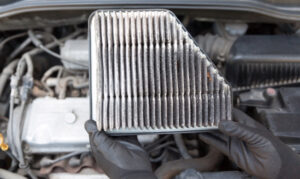Introduction
One of the most important safety features on your vehicle is the brake system. It is vital to ensure that the brake pads are in good condition to ensure the safety of yourself, your passengers, and other drivers on the road. Changing your brake pads is a simple task that can be done by anyone with basic mechanical skills. In this article, I will guide you through the process of changing your brake pads in a step-by-step manner, so you can ensure your vehicle is running safely.
Purpose of Changing Brake Pads
The purpose of changing brake pads is to ensure that the brake system is functioning correctly and safely. Over time, the brake pads will wear down and become less effective. If the pads are worn too thin, the metal of the rotor will come into contact with the metal of the caliper, causing damage to both components and decreasing the effectiveness of the brakes. Additionally, worn brake pads can also cause increased brake dust and noise. Changing the brake pads in a timely manner will ensure that your vehicle stops safely and efficiently.
Benefits of Changing Brake Pads
There are several benefits to changing your brake pads, including:
- Improved Safety: The most obvious benefit of changing your brake pads is that it will improve the overall safety of your vehicle. With new pads, your brakes will be more effective, which will give you more control over your vehicle and help you stop more quickly and safely.
- Increased Longevity of Brake Components: Another benefit of changing your brake pads is that it will help to extend the life of other brake components, such as the rotors. When brake pads are worn, the metal of the rotor will come into contact with the metal of the caliper, causing damage to both components. By changing the pads before they wear down too much, you can help to prolong the life of these components.
- Reduced Noise: One of the most common signs that your brake pads are worn is an increase in noise when you brake. Changing your brake pads can help to reduce this noise and make your vehicle more pleasant to drive.
- Improved Fuel Efficiency: Worn brake pads can cause increased drag on the braking system, which can lead to decreased fuel efficiency. New brake pads will reduce drag and improve fuel efficiency, helping you save money at the pump.
Step-by-Step Guide to Changing Brake Pads
Before you begin, make sure you have all the necessary tools and materials. You will need:
- A socket wrench set
- A c-clamp or brake caliper tool
- A pair of pliers
- A pair of gloves
- A new set of brake pads
Step 1: Locate the Brake Caliper
The brake caliper is the component that holds the brake pads. It is located on the inside of the wheel, near the rotor. To access the brake pads, you will need to remove the wheel.
Step 2: Remove the Wheel
Use the socket wrench set to remove the lug nuts that hold the wheel in place. Once the lug nuts are removed, you can pull the wheel away from the vehicle.
Step 3: Release the Brake Caliper
The brake caliper is held in place by two bolts. Use the socket wrench set to remove these bolts and release the caliper from the bracket. Once the caliper is loose, you can slide it off of the rotor.
Step 4: Remove the Old Brake Pads
With the caliper removed, you will be able to see the brake pads. Use the pliers to remove the old pads from the caliper.
Step 5: Install the New Brake Pads
With the old pads removed, you can install the new brake pads. Make sure the new pads are properly oriented and lined up with the caliper. Use the pliers to press the pads into place.
Step 6: Reinstall the Brake Caliper
Once the new pads are in place, you can slide the caliper back over the rotor and reattach it to the bracket using the bolts you removed earlier. Tighten the bolts securely with the socket wrench set.
Step 7: Reinstall the Wheel
Place the wheel back onto the vehicle and secure it in place with the lug nuts. Tighten the lug nuts securely with the socket wrench set.
Step 8: Test the Brakes
Once the brake pads are changed, it’s important to test the brakes to ensure they are working properly. Take the vehicle for a test drive and make sure the brakes are stopping the vehicle smoothly and effectively.
Precautions
- Always wear gloves when handling brake pads to avoid getting oil or grease on them.
- Always make sure to check your vehicle’s owner manual for any specific instructions or warnings before performing any maintenance or repairs.
- When working on brakes, always make sure the vehicle is in park, and the emergency brake is applied, and the wheels are blocked.
- If you are unsure about any aspect of the brake pad replacement process, it is best to consult a professional mechanic.
Conclusion
Changing your brake pads is an important task that should be done regularly to ensure the safety of your vehicle. By following this step-by-step guide, you can change your brake pads easily and efficiently. Remember to always pay attention to the wear on your brake pads and change them before they become too worn. With properly functioning brakes, you can drive with confidence, knowing that your vehicle will stop safely and efficiently.










